Packing for a trek can be difficult. You want to make sure you have everything you need, but you don’t want to over pack and be stuck carrying a heavy bag for days. This Langtang Valley trekking gear list includes everything you’ll need including the basics and some emergency items.
We intended to have a porter carry our bag, but by day two we realized it wasn’t a good fit. We hired three men for our group and two of them were wonderful guys who we enjoyed walking with and getting to know. Unfortunately, the third was rude to one of the women in our group, so we sent him home. Suraj and I ended up carrying our own bag since we were the most experienced trekkers in the group. Luckily, we have our packing list down to the essentials and our bag wasn’t too heavy.
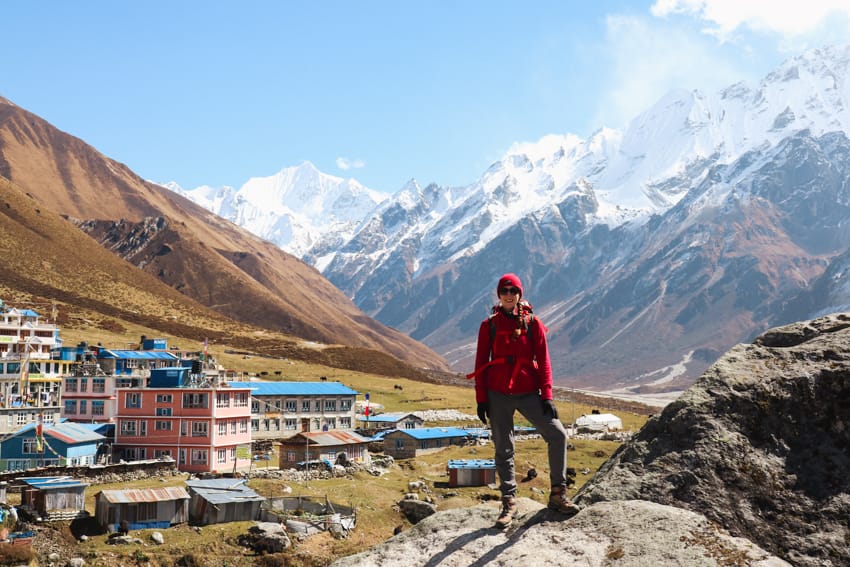
Langtang Valley Trekking Backpack & Storage
Pro Tip: Take everything you want to pack out one week in advance. Lay it all out somewhere easy to see. Each day before the trek, go over what you packed and see if you really need it. If you pack at the last minute, you’ll likely add impulse items that are heavy and unnecessary.
40L Backpack
I have the 40L Alchemist Bag from Eddie Bauer. It’s water resistant, has a tough outer shell that doesn’t rip easily, and is big enough to hold everything I need for a 4-12 day trek. I don’t recommend taking a bag over 55L because typically when you have more room, you fill it up with unnecessary stuff.
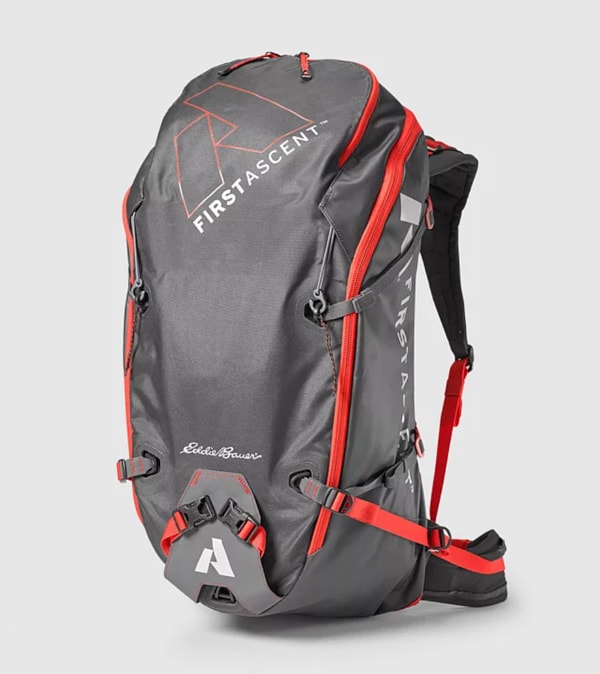
Mudder Waterproof Bags
Even though my bag is water resistant, it will get wet in a downpour, so I always have waterproof bags to store electronics and important documents like my insurance papers and wallet.
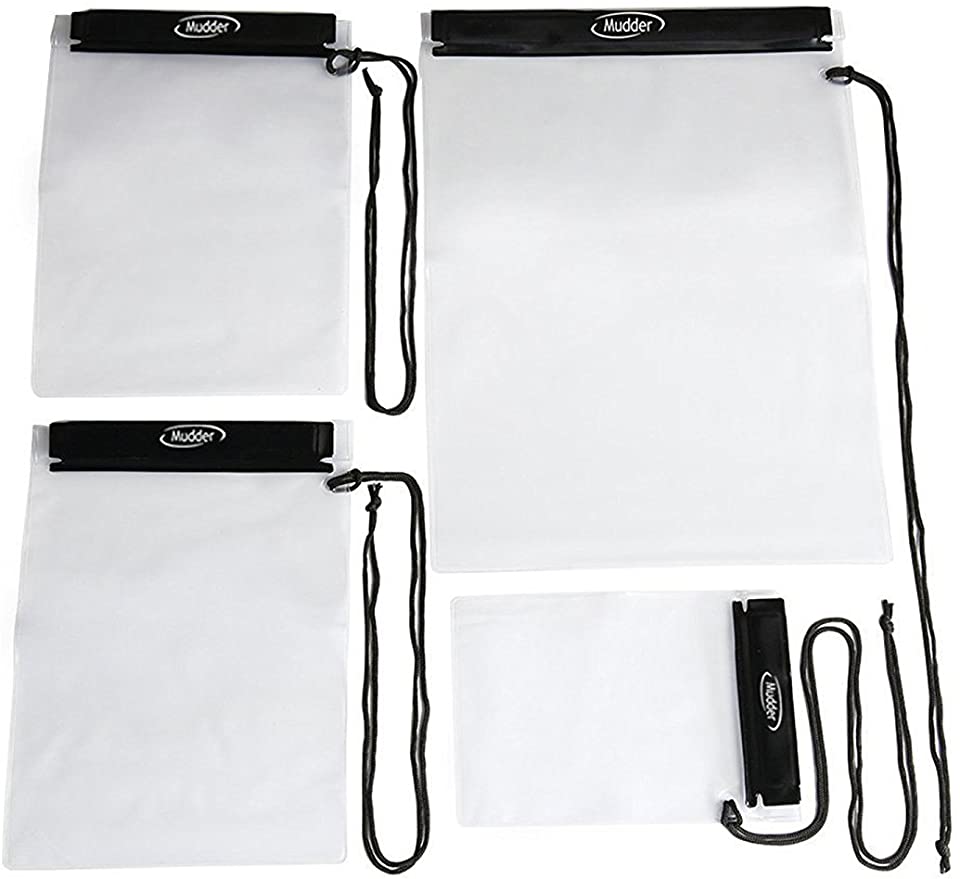
Packing Cubes
I’m a huge fan of packing cubes and can’t live without them. When trekking, you need to unpack and pack every day in a room without a dresser or table. Therefore, having everything in neat little cubes makes it easier. You just take out the cube you need rather than unpacking every single item in your bag.
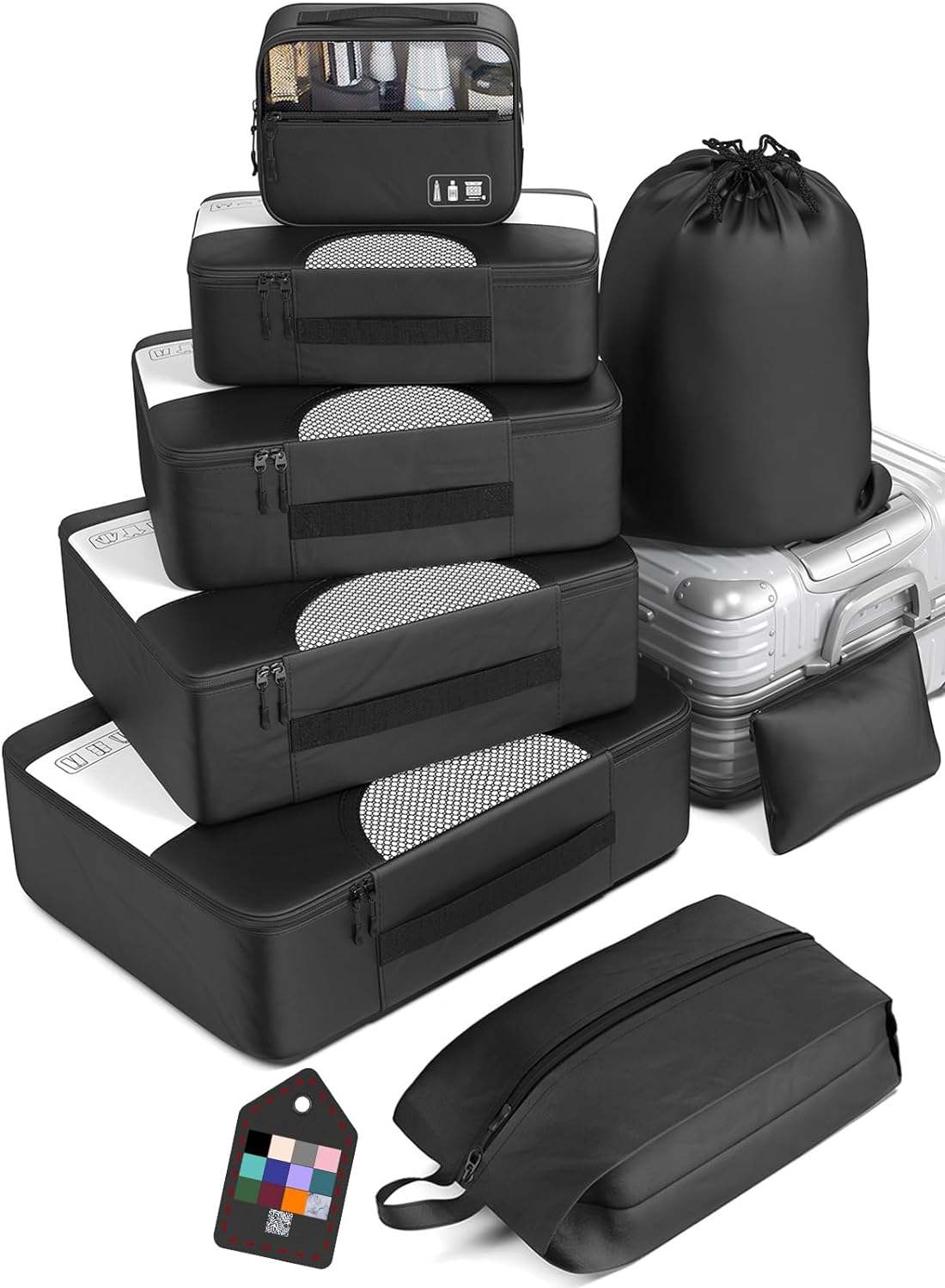
Water Bottle
Single use plastic water bottles are bad for the environment, and locals don’t have a proper way to dispose of them. They often end up being burnt in a fire or thrown someplace people can’t see. Please bring a reusable water bottle and a water purification method to help reduce waste in the mountains.

Backpack Rain Cover
This is a must if your backpack isn’t waterproof. Many backpacks are water resistant but won’t stay dry in a downpour.
Plastic Bag for Laundry
I bring a simple grocery store plastic bag for laundry to keep it separate from my other clothes. I only put dirty underwear in it as the larger items like pants and shirts will be worn more than once. A plastic bag adds no weight and doesn’t take up any room.
Ziplock Bags
Never underestimate the ziplock bag. These come in handy more often than you would think.
Langtang Valley Clothes & Accessories
Down Coat
You will need a warmer layer at night and in the mornings when you are at higher altitudes. The Langtang Valley trekking route is so famous for its winds that you’ll often see signs advertising teahouses that are tucked away and “wind free”. I can speak from experience that the wind is strong and on a cold day you’ll want a good coat. I’m obsessed with my Microtherm coat. It’s super warm, lightweight and packs down small.
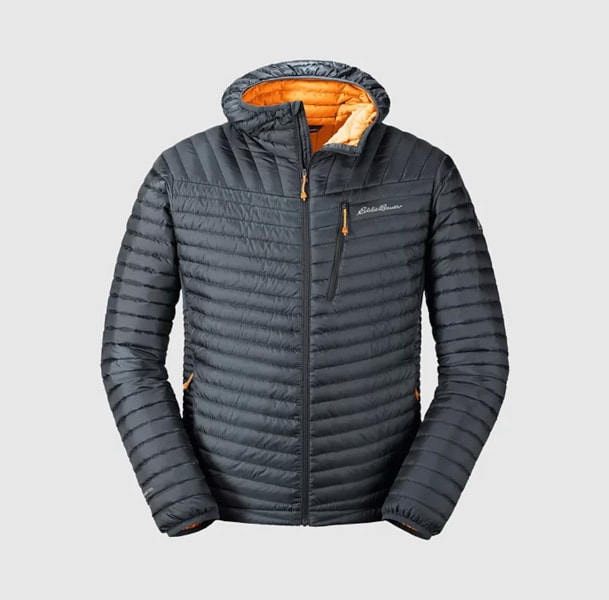
Fleece Jacket
Have a fleece jacket with you and keep it towards the top of your bag. Even in warm weather, when you trek, you get sweaty. And when you sweat, your clothes get wet which causes a chill. Have your fleece handy for tea breaks. You can also sleep in this at night if it’s cold. Plus, you can wear it around the teahouses in the evening.
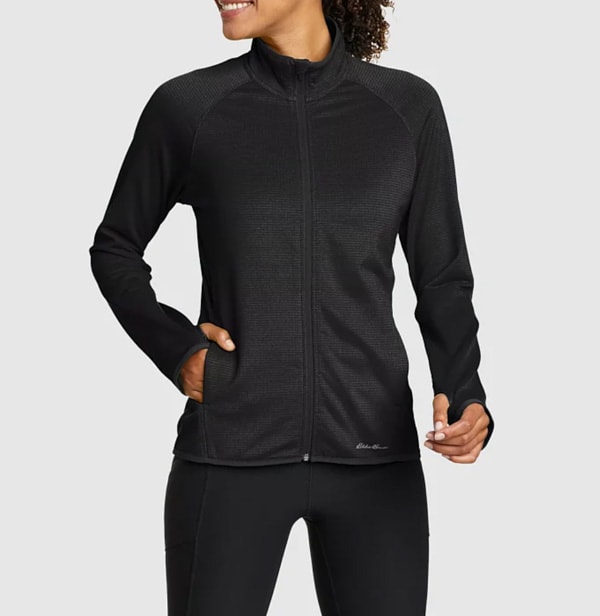
Raincoat / Poncho
Another item to have at the top of your bag is a raincoat. In the mountains, you never know when it’ll rain and when it starts, you don’t want to have to pull everything out of your bag to find it.
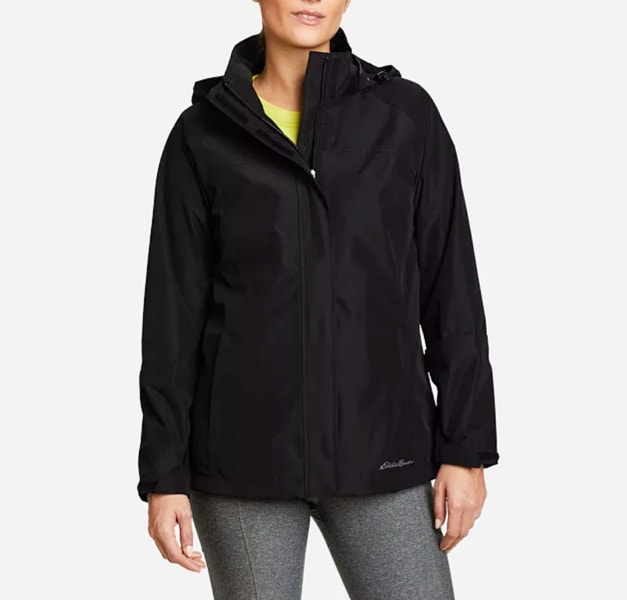
Quick Dry T-Shirts (2)
Two t-shirts are important because if one gets sweaty or wet, it might not dry by the next morning. So, you can rotate wearing these.
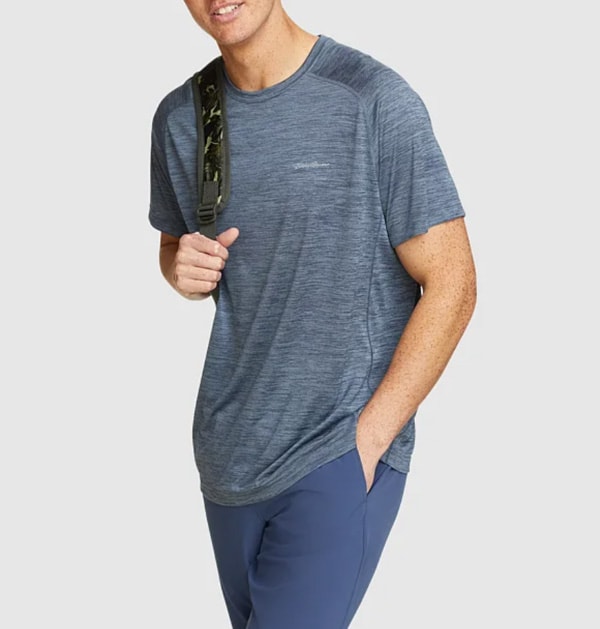
Quick Dry Long Sleeve Shirt
I carried one long sleeve quick dry shirt with me as well. I used this when we were at a higher altitude, including the day we hiked to Kyanjin Ri in the morning. We opted not to hike early for the sunrise, so it wasn’t too cold, but it was windy on the way back.
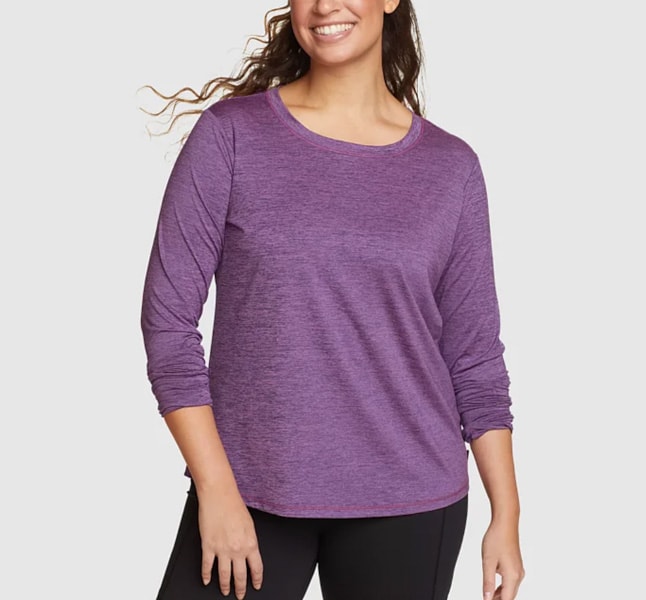
Lightweight Trekking Pants (2)
I love the pants I have from Eddie Bauer because they are light and have UV protection, so you don’t get too hot wearing them. I like to have two pairs to rotate between on treks that are more than four days.
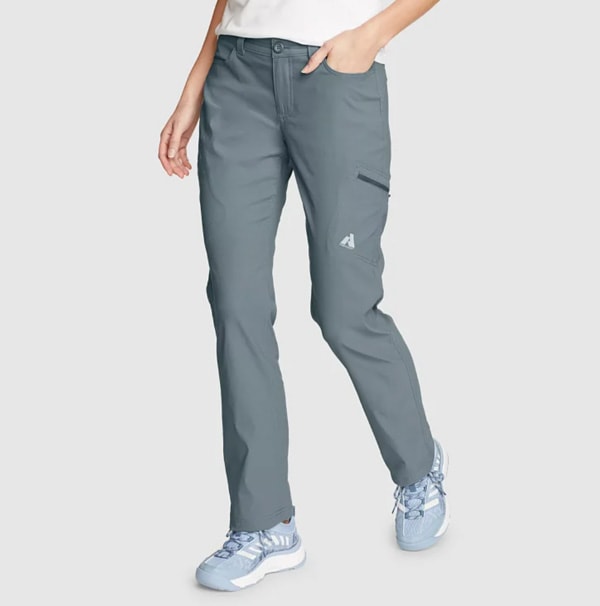
Thermal Base Layer
It was cold at night in Langtang village and Kyanjin Gompa. Thermals were put on as soon as we arrived, and I slept in them. The winds in the valley are strong which makes it even colder. I highly recommend having thermals with you. These would also be good if you do a sunrise hike.
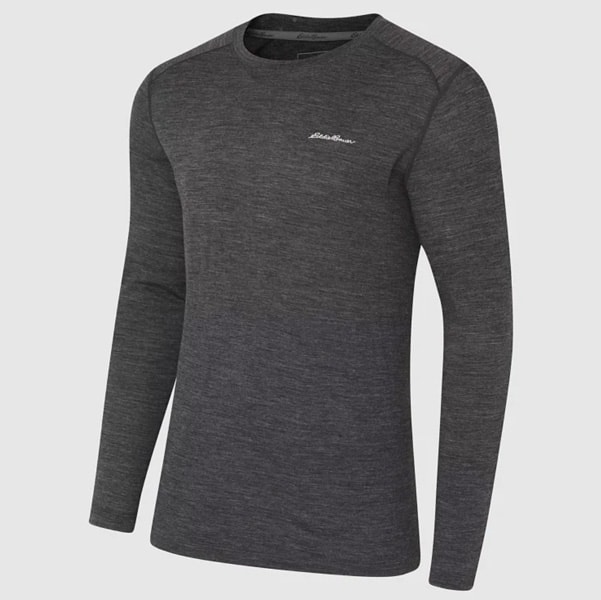
Buff / Scarf
Buffs are a great alternative to scarves because they take up very little room and keep you warm. You can also use it as a mask for protection from dust. I like this one because it is thin enough to breathe through and keep you warm. I wouldn’t recommend a fleece one as they are too hard to breathe through and make you too hot.
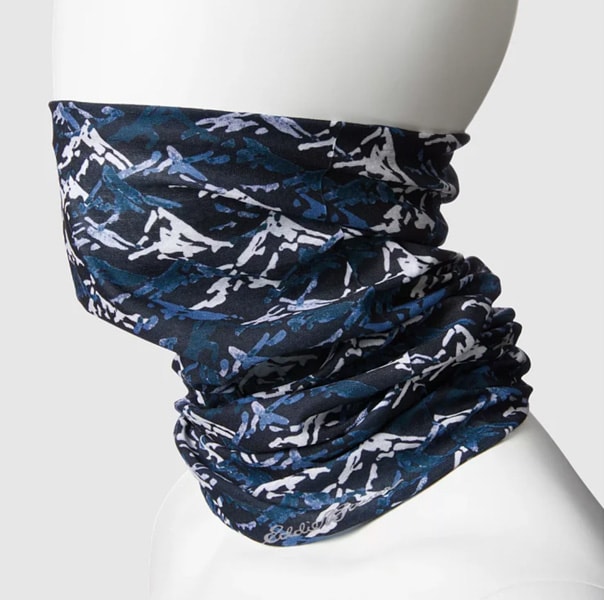
Short Hiking Socks (2)
Socks tend to get wet during treks. Whether it rains, you walk through a river, or you sweat a lot, my socks rarely dry in time for the next morning. So having two allows me to rotate them and keeps my feet dry.

Long Hiking Socks
I save these to sleep in so that I don’t have to wear dirty socks to bed at night. I also used these to go up to Kyanjin Ri in the morning.
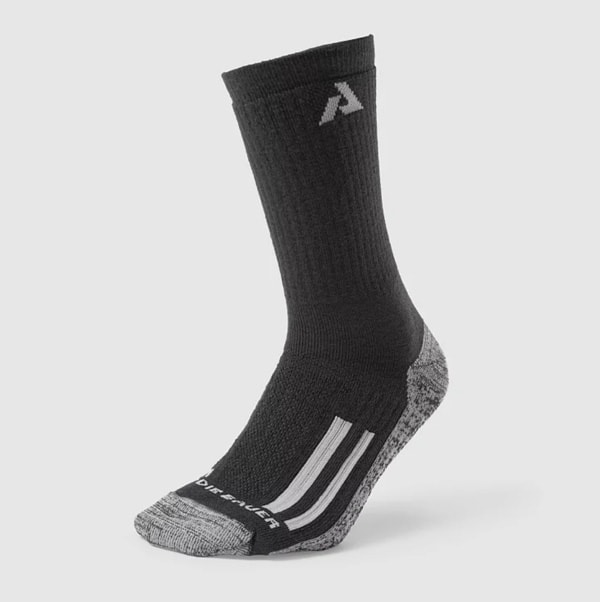
Hiking Boots
I am obsessed with my La Sportiva boots. As someone who hikes a lot, I invested in these as they will last years. They have great ankle support and good traction. Any hiking boots you get should be treated with Nikwax once a year to ensure they are waterproofed. These shoes have already been with me on several high altitude treks and they are holding up great!
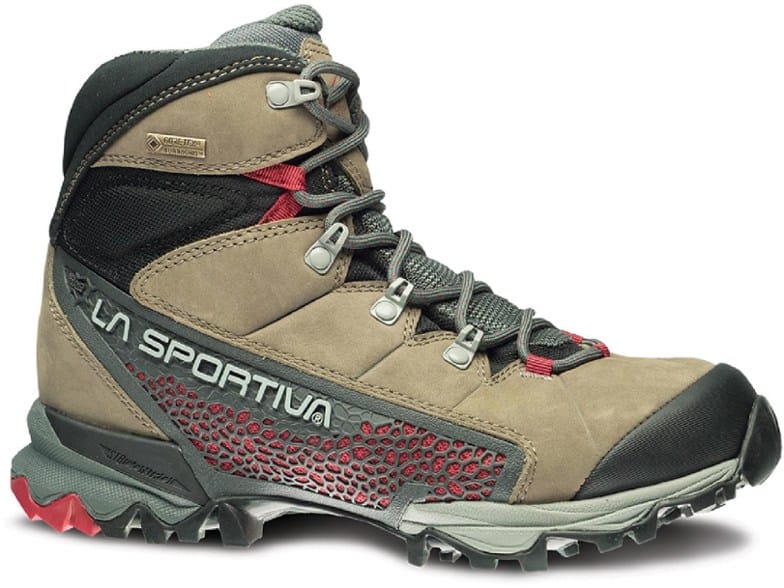
Hiking Sneakers
If you are just starting out with your hiking/trekking journey and you’re not ready to spend $200-$300 on boots, then I’d recommend getting a hiking boot/sneaker hybrid. The first two treks I did, I had a hybrid shoe and it was great. It’s also a fantastic option if you are backpacking and want a more flexible shoe that can be for hiking or normal walks through cities. I was recently gifted the NORTIV 8 hiking sneakers and love them. They’re a great affordable option for backpackers and novice hikers.
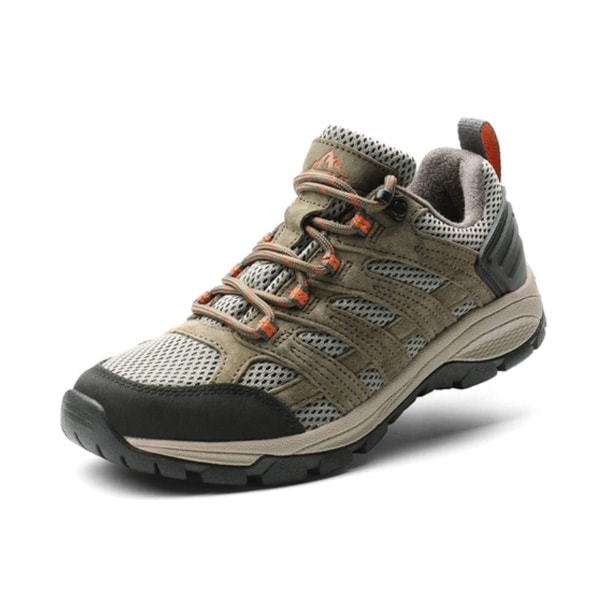
Flip Flops
I have a pair of very lightweight flip flops. These aren’t necessary; however they make life a lot easier. When you get to a teahouse, it feels so good to kick off your hiking boots. Also, it’s much easier to pee at night because you don’t have to lace up your boots. You can also wear them in the shower.
Summer Hat
A summer hat is a must. I recommend something made with quick dry material as it will get sweaty. You can also find hats with UV protection which is great.
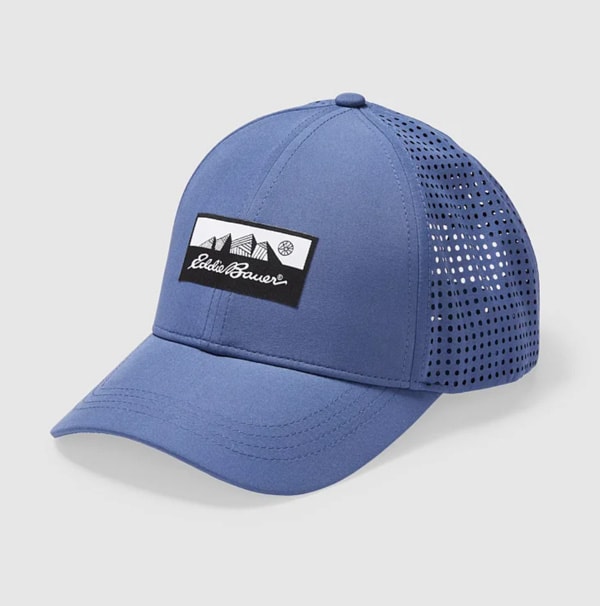
Winter Hat
You’ll want a warm winter hat for the higher altitudes and for the trek to Kyanji Ri. I also sleep with mine if it’s freezing at night.
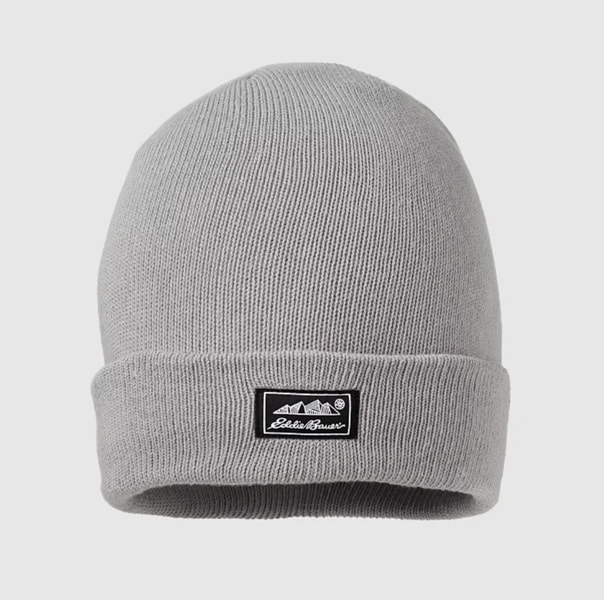
Sunglasses
Polarized sunglasses are necessary for daily wear. Parts of this trek have no cover from trees. On a sunny day, you are completely exposed to the elements. It also snowed on Tsergo Ri when we went. Snow at altitude can be blinding because the sun is so strong, so polarized lens’ are important.
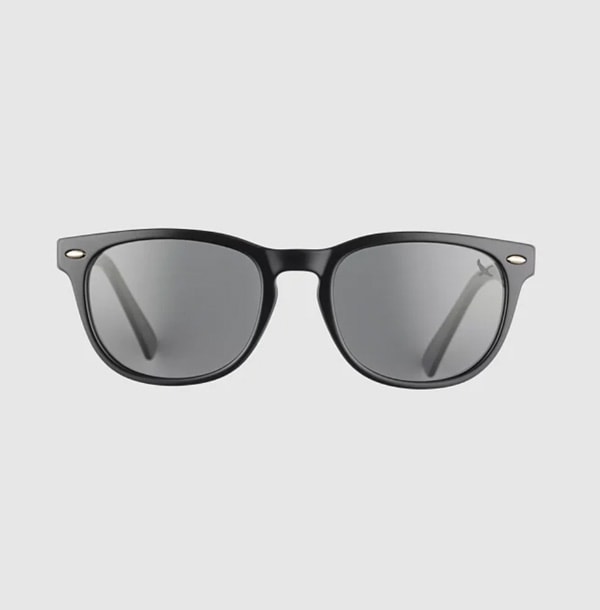
Gloves
I like thin gloves. I have a pair of silk glove liners that I love. I find thicker gloves are less effective for me, but other people may want something a little thicker.
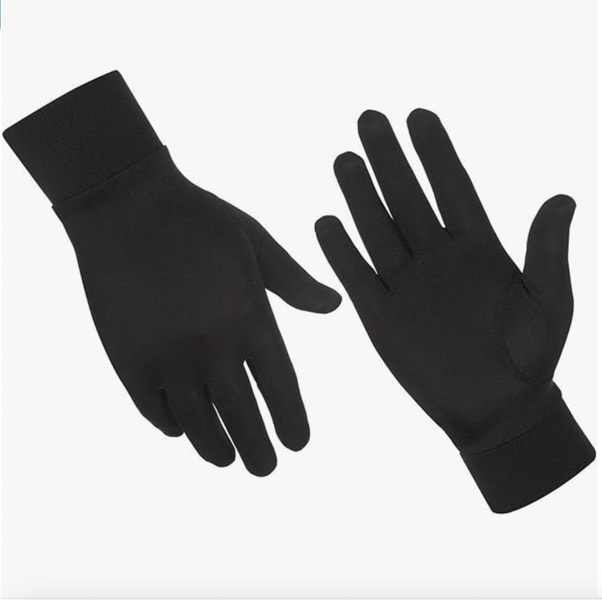
Pajamas
I like a long sleeve oversized cotton shirt and a pair of leggings, but whatever you are comfortable in will work. Long sleeves and long pants are nice because it gets cold at night and the rooms in teahouses aren’t well insulated.
Underwear
I hate doing laundry when I trek, so I pack a pair for each day. Doing laundry isn’t so difficult, but if they don’t dry by the time you leave in the morning, you have to hang them on the outside of your bag which isn’t ideal.
Sports Bras (2)
I have one bra to wear during the day, and one to change into once we arrive so that I’m not wearing a sweaty one as it gets cold at night.
Langtang Valley Trekking Toiletries
Pro Tip: Think about the weight of every item when you choose it. On my first trek, I packed a full sized toothpaste, a heavy hairbrush, and so many excessive items. Find the lightest and smallest version of everything.
Wet Wipes
This route has some decent showers, but I always carry wet wipes just in case I can’t take a shower. I recommend decomposable ones to lessen your footprint.
Quick Dry Towel
A small microfiber towel is a must if you plan to shower on the way. These dry incredibly fast and pack into a small space.
Bug Repellent
I like Badger Bug Balm which is a natural bug repellent. It’s a solid stick, so it won’t spill in your bag and it works very well! I’ve gotten all of my family and friends hooked on this stuff because it’s so great.
Sunscreen
Some of this trek takes place on a path with no coverage from trees. Make sure to have an SPF 50 that is sweat resistant. The sun is stronger at altitude and can leave you with bad burns if you aren’t careful. Use sunscreen every day, even if the sun isn’t out.
Tooth Care
Bring a small travel sized tube of toothpaste, a travel sized toothbrush and floss.
Hand Sanitizer
There isn’t always soap available by bathrooms, so be sure to have hand sanitizer.
Deodorant
Pack a small travel sized deodorant.
Vaseline
We always carry a tiny vaseline with us. Trekking has an interesting way of chapping ones lips and nostrils. On one trek, the combination of the strong sun and freezing cold winds left my nose looking like I had a severe burn for weeks. We apply vaseline multiple times a day to avoid this.
Roll of Toilet Paper
You will not be provided with toilet paper so bring your own. One roll per person is enough for this trek. You can buy toilet paper in the mountains, but it’s more expensive.
Feminine Hygiene
It’s hard to find pads in the mountain and impossible to find tampons in Nepal, so bring what you need with you.
Hair Care
Bring hair ties and a lightweight travel hairbrush (or comb). Don’t make the mistake of packing a heavy brush.
Shower Supplies
Bring a small travel sized bottle of shampoo, conditioner, and shower gel. If you bring soap, make sure to have a plastic zip lock bag to store it in after using it.
Nail Clipper
Pretty self explanatory, but make sure to get the kind with the little thing that cleans under your nails. Without a place to wash your hands properly, you’ll get a lot of dirt under there.
Fabric Softener Sheets
I brought fabric softener sheets from home. I put them in with my clean clothes and laundry to make sure everything stayed smelling fresh over during the trek. They definitely made a difference.
Langtang Valley Medication & First Aid
Diarrhea Medicine
Traveler’s diarrhea is a major problem in Nepal. We always carry several tablets with us and even if you don’t need it, someone in your group likely will.
Activated Charcoal
Activated charcoal is great for treating food poisoning. I always bring about 10 tablets with me. Talk to a doctor before you take this as it is strong enough to cancel out some prescription medications.
Electrolytes
Dehydration is common at altitude, so be sure to have some electrolytes. I like Nuun the best because they taste good. You can buy electrolytes in Nepal, but the taste is kind of gross.
Ankle / Knee Support
I have a bad knee and ankle so I used a brace for the downhill sections. This makes my life exponentially easier and helps manage the pain.
Basic First Aid
Have an array of items including band aids, Neosporin, antibacterial creams, etc. On our last trek, Suraj slipped on a wet rock and got a big gash in his knee. Luckily, I had gauze, antibacterial powder, a large band-aid, and some medical tape to fix him up.
Water Purification Tablets
Water in Nepal is not potable. This means you cannot drink it. Plastic water bottles are bad for the environment, so I discourage you from buying them. Therefore, you need a water purification system. Water tabs take up the least amount of room and are the most affordable.
Vitamins
I bring a few tabs of vitamin C, B, olive leaf, zinc and echinacea for immune support so that I don’t get sick. I also bring electrolyte powder in case someone gets dehydrated.
Antibiotics
I always bring an antibiotic for food poisoning just in case. Talk to your doctor about when to use it.
Prescription Drugs
There are almost no pharmacies in the mountains, so be sure to have all prescription drugs with you when you head out.
Cold Medicine
The common cold can hit you anywhere. Have a few days’ worth of cold medicine with you. On every single trek I’ve been on, I’ve given at least one person cold medicine. Do not use nighttime medicine at high altitudes as they can affect your breathing which is already affected by low oxygen levels in the air.
Tylenol/Advil
I don’t use pain killers, but I always have these in case of an emergency. This is another item that I’ve given to someone else on every single trek I’ve done.
Diamox
I’ve done over 10 treks in Nepal and have only taken Diamox once. If you don’t plan to take Diamox, bring some with you for emergencies. If you are considering taking it, talk to a doctor to make sure it’s right for you. There are side effects and you need to drink a ton of water when taking it.
Throat Lozenges
Throat lozenges are a life saver, especially if it’s cold when you go trekking. Teahouse walls are super thin, so waking up and coughing means you wake up the whole teahouse. They’re also great during the day if the air gets cold. These are more important in colder high altitude areas, but are also handy if you get sick and have a sore throat.
Langtang Valley Trekking Electronics
Camera & Charger
I bring a professional camera with me for work, however, it’s heavy to carry. If you aren’t into photography, I’d recommend just using your phone camera.
Phone & Charger
This probably goes without saying. You likely won’t have service, but can you really go anywhere without your phone these days?
Travel Adapter
You’ll need an adapter to charge things. This one is lightweight compared to other options.
SIM Card
You’ll need a local SIM card to make your phone work in Nepal. You can read my post on SIM cards to see which one you will want. SIM Cards in Nepal
Maps.me Downloaded
Maps.me is a free phone app that has all the trekking trails on it. This is great as a backup if you get lost. Make sure to download it before starting the trek as you need a good wifi signal to download the map. Most of the Langtang Valley trekking route is shown clearly on maps.me.
Headlamp
Headlamps are important especially at nighttime. Many of the teahouses in the area have electricity and indoor bathrooms, but electricity isn’t always guaranteed. You’ll need a headlamp to go to the bathrooms at night. If you decide to do a sunrise trek, you’ll also need one for that. And, worst case scenario, if you don’t reach the village in time, you may need to walk in the dark. Hopefully that won’t happen.
Kindle / Book
I take a Kindle Paperwhite with me on every trek. I like that it’s lightweight, holds a charge that lasts me days (if not weeks), and it has a backlit screen which is perfect for reading if there’s a power outage or poor lighting. There is a lot of downtime at the teahouses, so you’ll want some form of entertainment.
Power Bank
On some routes you’ll need to pay to charge a device. It can cost between $1.00 to $3.00 USD per charge and there may be limited outlets available and a queue. It’s best if you have a power bank because you can charge that one time and then use it to charge all your other devices for a few days.
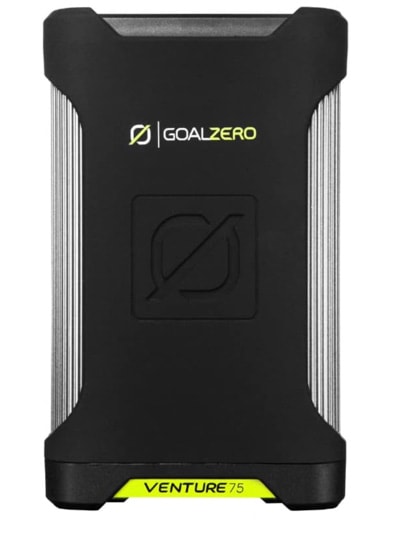
Movie / Music Downloads
Some trekkers arrive to the teahouses around 1-3pm each day. Having a few movies on your phone is good. If you like to listen to music as you go, make sure you have some good beats downloaded.
Langtang Valley Trekking Snacks
Chocolate
You can buy everything you need on this route, but chocolate is sometimes expensive. I recommend bringing some with you in case you need a little sugar to get moving.
Protein Bars
There are plenty of places to stop for snacks, but for some reason, it’s impossible to find protein bars or trail mix on the way. These are great for eating at tea breaks and in between meals.
Other Items Needed for Langtang
Trekking Poles
I needed trekking poles for this route. The downhills are steep and I have a bad knee and ankle. Trekking poles help take the weight off when descending.
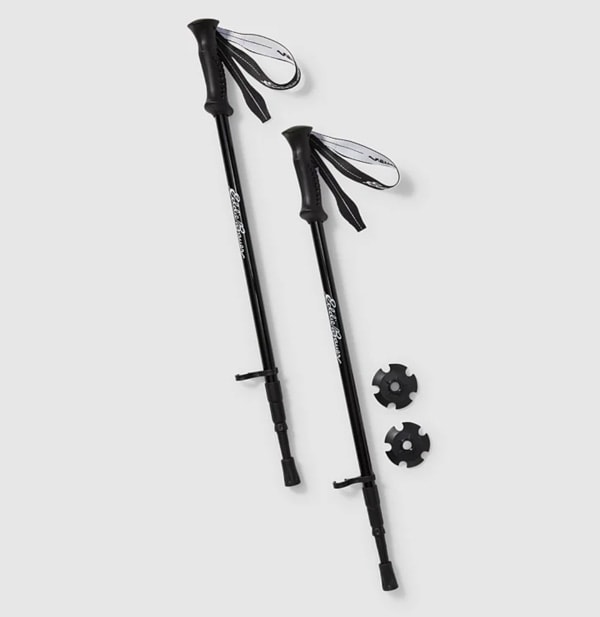
Money
Make sure to bring money in small denominations (1,000, 500, 100, and 50) to make it easier for teahouse owners. If you only carry 1,000 rupee notes, it will be difficult to get change when you pay your bill.
Entry Permit
A Langtang National Park permit is required for this trek. You can get it in Kathmandu at the Nepal Tourism Board Office.
Copy of Passport/Visa
Always have a copy of your passport and visa with you in case of an emergency.
Sleeping Bag
I almost never recommend a sleeping bag, however, if you are a germaphobe, you may want to bring your own. Teahouses provide you with sheets and blankets, but they aren’t washed every day and are only washed by hand in cold water. We use the ones the teahouse provides but some people prefer their own.
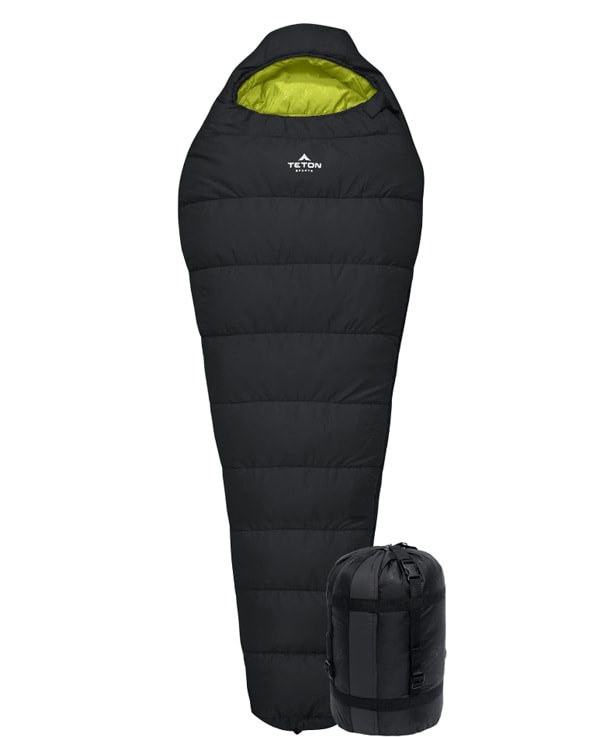
Crampons
It didn’t snow when I did the Langtang trek, but it can snow a lot there at different times of the year. Check with your guide about bringing crampons. They are kind of heavy to carry, but if it snows they make life so much easier.
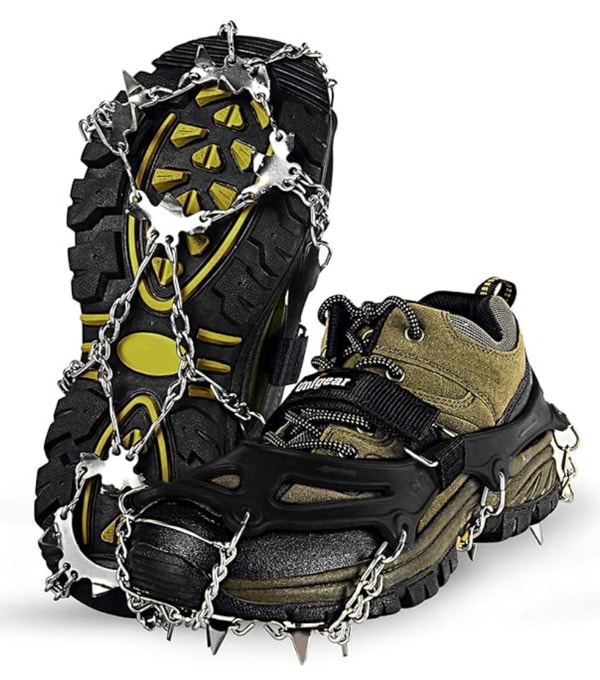
Langtang Valley Trekking Map
I always keep a map of the area. It’s fun to take it out each night and go over tomorrow’s route, see the altitude gains, and plan lunch breaks. You can buy one in Kathmandu or Pokhara.
Playing Cards
Someone else will always have playing cards, but I recommend bringing a pack just in case. Learn a few games before you leave so you have some options to play when trekking. We had a hilarious time playing “Bullshit” with an entire teahouse. We also had an epic game of UNO going on one trek.
Duct Tape
This seems like a weird thing to recommend, but you never know when you’ll need it. Bring a small roll just in case. I once used it to keep a shoe from falling apart while walking back 5 hours after it busted open (a lesson in buying good quality shoes).
Shopping in Nepal
Planning to shop when you arrive? On my first trip to Nepal, I was backpacking for 9 months in Southeast and South Asia. I didn’t have room in my pack to carry a bunch of heavy winter clothes with me, so I ended up buying everything in Thamel (the tourist hub in Kathmandu). I arrived a few days early, so I had plenty of time to search for things. I learned quickly that I’d need to check multiple stores and negotiate a lot.
Recently, I was approached by Mount Ready to try out their new system. They make the experience a lot easier. You simply go to their website, pick your trek and they have a pre-arranged pack with everything in it. It’s the same stuff you buy in Thamel (including knock offs) but you don’t have to spend days running around and negotiating. The prices are fair and you can add or remove stuff from the pack. You show up at the store, and everything is picked out for you. All you have to do is try it on and pick the colors you like. It’s super simple.
Before recommending them, I wanted to test it out myself, so I had them put together a pack for the Annapurna Circuit. I removed a few things, changed some sizes and styles and checked the quality of the clothes. If you’re doing a trek once and don’t want to invest a lot of money, then this is the way to go. I started out with a lot of items from Thamel and slowly upgraded my pack with the Eddie Bauer products listed above.
Are you headed out on the Langtang Valley trekking route? Let me know if you have any questions in the comments.
You might also like…
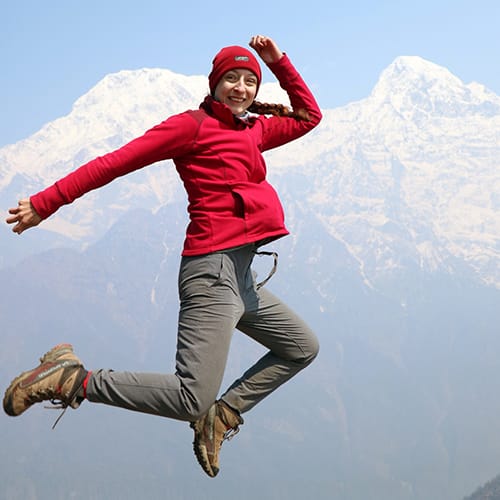
Michelle Della Giovanna
Writer at Full Time Explorer
I’m just your average New Yorker who quit her job in the fashion industry to explore the world. Come find out what it’s like to trade in five-inch heels for squat toilets.

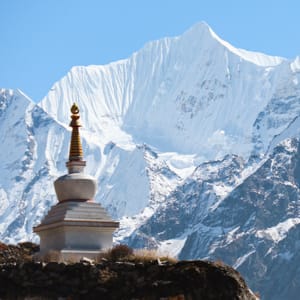
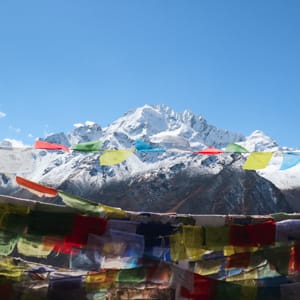
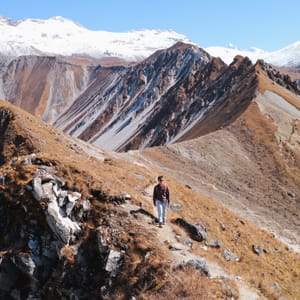
Leave a Reply